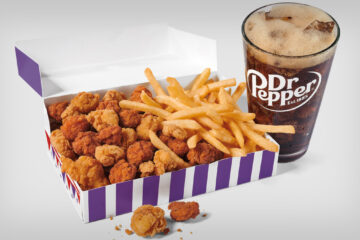Economists said the U.S. is not in a recession currently, but one could start in 2023.
In spite of a spirited political debate that has drawn in Elon Musk, economists, the Federal Reserve and Wall Street overwhelmingly agree that current economic data don’t show the U.S. in a recession.
But the future is not so clear.
Even though GDP has contracted for two consecutive quarters, including a decline of 0.9% for the second quarter, the Atlanta Federal Reserve is now estimating that GDP will rise by 2.1% in the third quarter.
Raphael Bostic, the president of the Atlanta Fed said that the U.S. economy is “a ways from a recession” and noted that recession fears “could become self-fulfilling.”
The strength of job growth is encouraging, demonstrating “momentum” in the economy, Bostic told National Public Radio on Friday. “There’s a lot of demand out there, and so I think we’re a ways away from a recession.”
His sentiment mirrors Fed Chairman Jerome Powell’s comments after the central bank raised rates by 0.75% on July 28.
“We’re not trying to have a recession, and we don’t think we have to” as part of the effort to lower inflation, he said. “I do not think the U.S. is currently in a recession, and the reason is, there are just too many areas of the economy that are—that are performing, you know, too well.”
GDP Not Only Economic Indicator
The current data has led to mixed results since job growth remains strong, yet high inflation is eroding into wages, Mark Hamrick, senior economic analyst at Bankrate, a New York-based financial data company, told TheStreet.
Using GDP as a benchmark for determining if an economy has fallen into a recession is no longer the ‘be all and end all’ regarding the would-be health of the economy, he said.
There has been a “apparent disconnect” between the current job market status coupled with the unemployment rate at 3.6% even when the quarterly GDP reads have been in the minus column, Hamrick said.
While employment gains have been “impressive year-to-date,” they are trending lower even as new claims for unemployment benefits are on an upward trajectory, he said.
While GDP has been estimated to be positive in the third and fourth quarters, it is “widely acknowledged that risks for the U.S. economy have risen and are high,” Hamrick said. The recent Bankrate quarterly survey of economists put the odds of recession at essentially 1-in-2 through the end of 2023.
While using two consecutive quarters of GDP growth is a reasonable shorthand, “it lacks context,” Steve Sosnick, chief strategist of Interactive Brokers, a brokerage based in Greenwich, Conn., told TheStreet.
“It is entirely possible that we can feel we are in recession well before the National Bureau of Economic Research declares one,” he said. “The economy is sending mixed messages and that’s what makes it so difficult. The stock market has become enamored with the idea the Fed will eventually stop raising rates and start lowering early next year.”
Wall Street Says Economy Not In a Recession
Bank of America said the ongoing debate about the economy is merely a “distraction” because of “roaring payroll, strong gross domestic income and strong final sales all suggest ‘recession’ is still a forecast, not a reality.”
JPMorgan Chase echoed a similar view, stating, “… we do not believe the U.S. slipped into recession earlier this year given nonfarm payroll growth averaged 375,000 per month during 2Q.”
The investment bank did say it is concerned about unemployment given the recent large increase in initial jobless claims. It said if the level increases to an average 275,000 this quarter it “would be a strong signal that the US has entered recession.”
However, the third quarter GDP growth estimate is another reason to “justify the view that the U.S. economy is not in a recession at the moment,” said Anthony Chan, former economist for J.P. Morgan Chase.
“Typically, the U.S. is entering a recession when employment growth is typically growing on a yearly percentage basis by 2.0% or less,” he said.
Both the Establishment Survey and the Household Survey, are showing growth of greater than 4% on a yearly percentage basis.
“This does not suggest the U.S. is in the middle or entering a recession at the moment,” Chan said.
Wall Street and investors should be prepared for slower economic growth, and corporate earnings and a 65% probability of a mild recession within the next 12 months, he said.
“For now, the economic backdrop does not support the view that we are currently in a recession,” he said.
The ongoing, “senseless unhealthy recession obsession” has been resolved, said Gregory Daco, chief economist at Ernst & Young.
The economy is “undeniably cooling” with GDP growth falling from 3.5% year-over-year in the first quarter to 1.6% year-over-year in the second quarter, he said.
“The persistent drag from higher inflation, a decidedly more hawkish Fed, tighter financial conditions and a deteriorating global economic backdrop will continue to weigh on housing activity, consumer spending, business investment and trade,” Daco said.
The U.S. will head into a recession starting in the fall because even though GDP growth will rebound in the third quarter, it will contract in the fourth quarter and first quarter of 2023, averaging 1.6% in 2022 and only 0.7% in 2023, he said. The unemployment rate will rise and surpass 4% in early 2023.
Consumers Are Feeling the Pinch
Consumer confidence has tumbled even though spending has risen. The Michigan consumer sentiment survey showed a slight increase in July, but the reading is near its lowest level ever.
The one-year outlook also declined to its lowest reading since 2009, even though concerns about global factors dipped, said Joanne Hsu, the survey’s director.
Higher inflation rates have made a major dent in the budgets of consumers with skyrocketing prices in food, gasoline, rent and mortgage and credit card rates.
Savings rates for Americans have also fallen recently and declined to 5.1% in June from 5.5% in May, the lowest level since August 2009.
Consumers are still spending more even with inflation rates at their highest in over 40 years, Tim Quinlan, senior economist and Shannon Seery, an economist at Wells Fargo Securities, wrote in a July 29 research note.
The increase in spending is “taking a toll, as consumers have not had to take their saving rate this low since 2009,” Quinlan and Seery wrote.
Incomes are not keeping up with inflation rates and households are spending more only because they are not saving money.
Wells Fargo also estimates that a recession will begin by the beginning of next year.
“The exact timing of recession depends on a number of variables, but how the demand environment evolves is certainly an important component,” said Quinlan and Seery. “Spending today is coming at the expense of a deterioration in household balance sheets, and the longer it lasts the more risk it poses to the financial health of households.”
The economy has yet to “process or react to this year’s aggressive rate raising tactics,” Hamrick said.
“Ultimately, the only salvation for the U.S. economy would be true relief from inflation,” he said. “And the day of that salvation appears to remain well off in the future.”


